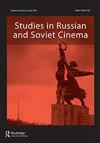Russian TV series in the era of transition: genres, technologies, identities
IF 0.4
0 FILM, RADIO, TELEVISION
引用次数: 0
Abstract
analyse well-known films from unexpected perspectives. However, this analysis is sometimes incomplete. For example, in her consideration of Klushantsev’s Planet of Storms (1962), she concentrates on the plot related to the film’s female character, while other aspects of the film concerning the problems of alternative history, the interaction between Russian and American cosmonauts, and the construction of special effects are characterised rather sparingly. Klushantsev’s films deserve (as Majsova herself notes) much more attention, not only due to his unique cinematic talent but also because they raise some interesting questions about the development of the sci-fi genre in the context of the formation of the Soviet film industry and its interaction with the development of cosmonautics. Concentrating on the analysis of the social content of space films plots seems to be a legitimate methodological choice of the author, but it would be important to at least outline for the reader other ways of studying sci-fi cinema, such as the analysis of special effects or the sound component of films. It is in Majsova’s book that many segments of Soviet film fiction are presented more or less full for the first time. However, it is clear that the work of directors such as Protazanov and Tarkovsky has repeatedly been the subject of attention by film scholars. And if in the description of Aelita the author refers extensively to Ian Christie and Andrew Horton, the author’s attitude to the vast tradition of studying the fantastic imagination in the films of Tarkovsky remains unсlear. Majsova’s investigation of the constructions of subjectivity in Soviet sci-fi cinema, the spaces and agents depicted in it, deepens our understanding of the canon of the genre, shows the tensions and shifts within it and demonstrates how the utopian impulse is embodied in the aesthetic of each of the analysed works. The typology of utopian imagination, outlined in the conclusion of Majsova’s book, is the logical conclusion of this analysis of the Soviet sci-fi film, showing once again that it is connected to the poststructuralist interpretation of subjectivity, which was shaped in the space of Soviet cinematic astroculture and stitched into the sci-fi films. However, the book’s conclusion, entitled ‘Replay, rewatch, remember’ also brings another perspective, assuming a shift from astroculture to film culture, from the diversity of utopias to multiple viewers, from an analysis of genre structures to an examination of the film practices associated with sci-fi archives and space age memory. It could be said that by drawing a map of the Soviet film fantasy country for us, Majsova has invited us to a more careful and scrupulous acquaintance with its attractions.转型时代的俄罗斯电视剧:类型、技术、身份
从意想不到的角度分析知名电影。然而,这种分析有时是不完整的。例如,在考虑Klushantsev的《风暴星球》(1962)时,她专注于与电影中的女性角色有关的情节,而电影中关于另类历史问题、俄罗斯和美国宇航员之间的互动以及特效构建的其他方面则相对较少。正如马吉索娃本人所指出的,Klushantsev的电影值得更多关注,这不仅是因为他独特的电影天赋,还因为它们在苏联电影业形成的背景下,以及与宇航员发展的互动中,提出了一些关于科幻类型发展的有趣问题。专注于分析太空电影情节的社会内容似乎是作者合理的方法选择,但重要的是至少要为读者概述其他研究科幻电影的方法,例如分析电影的特效或声音成分。正是在马约索娃的书中,苏联电影小说的许多片段首次或多或少地被完整呈现。然而,很明显,普罗塔扎诺夫和塔尔科夫斯基等导演的作品一再受到电影学者的关注。如果在对Aelita的描述中,作者广泛引用了Ian Christie和Andrew Horton,那么作者对研究Tarkovsky电影中奇幻想象的巨大传统的态度仍然不明确。马吉索娃对苏联科幻电影中主体性结构、其中所描绘的空间和代理人的调查,加深了我们对这一类型经典的理解,展示了其中的张力和转变,并展示了乌托邦冲动是如何体现在每一部被分析作品的美学中的。马吉索娃的书的结论中概述的乌托邦想象的类型学是对苏联科幻电影进行分析的逻辑结论,再次表明它与主体性的后结构主义解释有关,后者是在苏联电影宇宙文化的空间中形成的,并被缝合在科幻电影中。然而,这本书题为“回放、重新观看、记住”的结论也带来了另一个视角,假设从太空文化到电影文化的转变,从乌托邦的多样性到多重观众,从对类型结构的分析到对与科幻档案和太空时代记忆相关的电影实践的审视。可以说,通过为我们绘制苏联电影幻想国家的地图,马约索娃邀请我们更加仔细和谨慎地了解它的吸引力。
本文章由计算机程序翻译,如有差异,请以英文原文为准。
求助全文
约1分钟内获得全文
求助全文

 求助内容:
求助内容: 应助结果提醒方式:
应助结果提醒方式:


